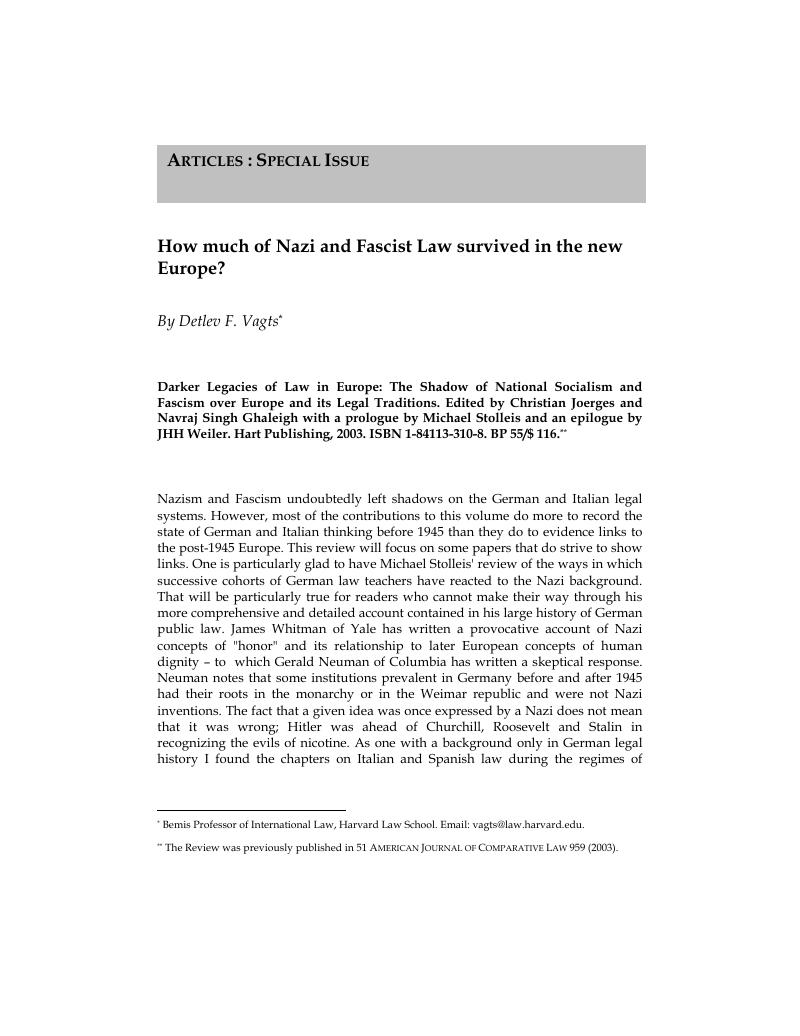No CrossRef data available.
Article contents
How much of Nazi and Fascist Law survived in the new Europe?
Published online by Cambridge University Press: 06 March 2019
Abstract

- Type
- Review Article
- Information
- German Law Journal , Volume 7 , Issue 2: Special issue - European Integration in the Shadow of Europe's Darker Pasts: The “Darker Legacies of Law in Europe” revisited , 01 February 2006 , pp. 237 - 240
- Copyright
- Copyright © 2006 by German Law Journal GbR
References
1 John Laughland, The Tainted Source: The Undemocratic Origins of the European Idea 35 (1997).Google Scholar
2 This argument is developed in Niall Ferguson, The Pity of War 171, 460 (1999), who even suggests that if Britain had not entered World War I “continental Europe could therefore have been transformed into something not wholly unlike the European Union we know today” 460.Google Scholar
3 Joerges, Christian, Europe as Großraum? Shifting Legal Conceptualisations of the Integration Project, in Darker Legacies of Law in Europe, 167, 185 (Christian Joerges/Navraj Singh Ghaleigh eds., 2003).Google Scholar
4 Weiler, JHH, Epilogue, in Darker Legacies of Law in Europe, 389, 397 (Christian Joerges/Navraj Singh Ghaleigh eds., 2003).Google Scholar
5 Joerges, , supra note 3, at 183.Google Scholar
6 Weiler, , supra note 4, at 401.Google Scholar
7 McCormick, John P, Carl Schmitt's Europe: Cultural, Imperial and Spatial, Proposals for European Integration, 1923-1955, in Darker Legacies of Law in Europe, 133, 141 (Christian Joerges/Navraj Singh Ghaleigh eds., 2003).Google Scholar
8 For further defense of this position see Detlev F. Vagts, Carl Schmitt in Context: Reflections on a Symposium, 23 Cardozo Law Review, 2157 (2002).Google Scholar


